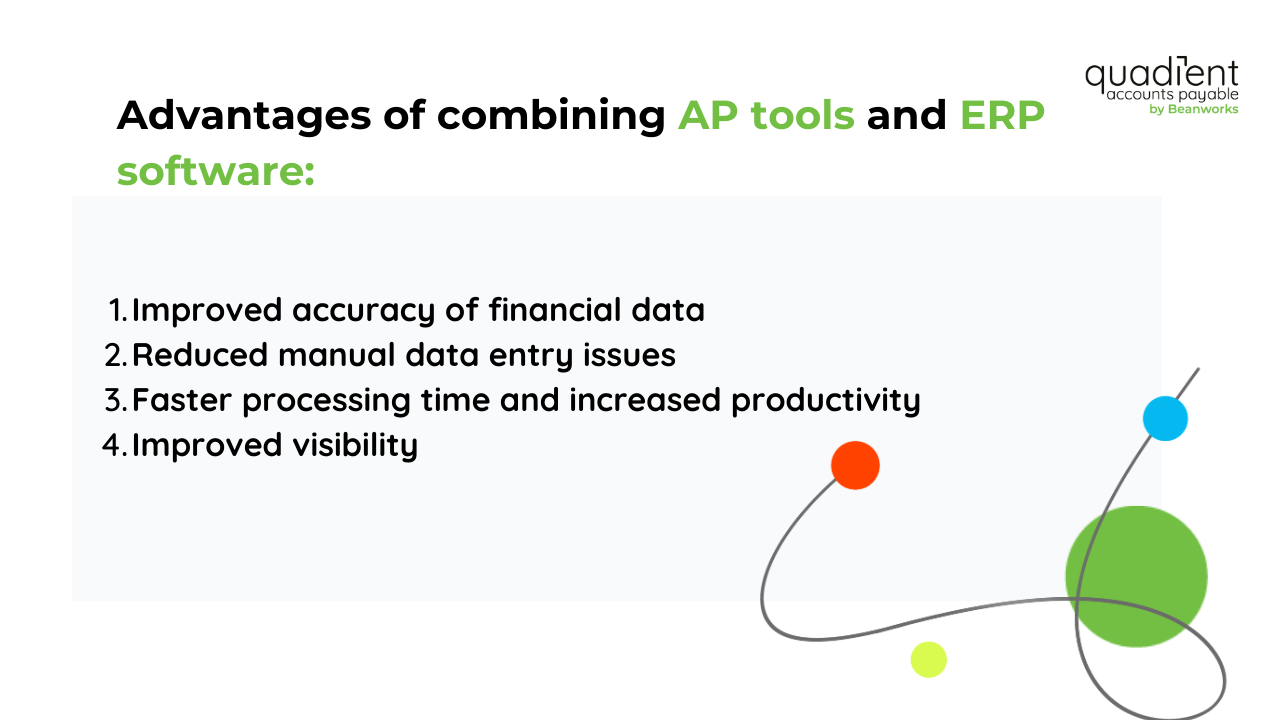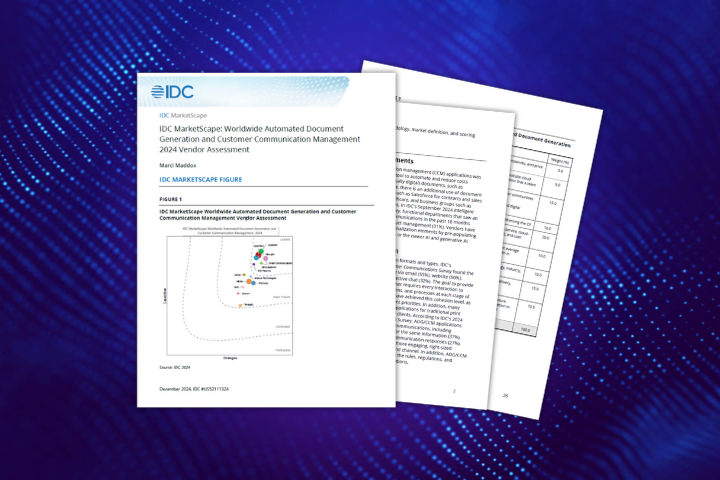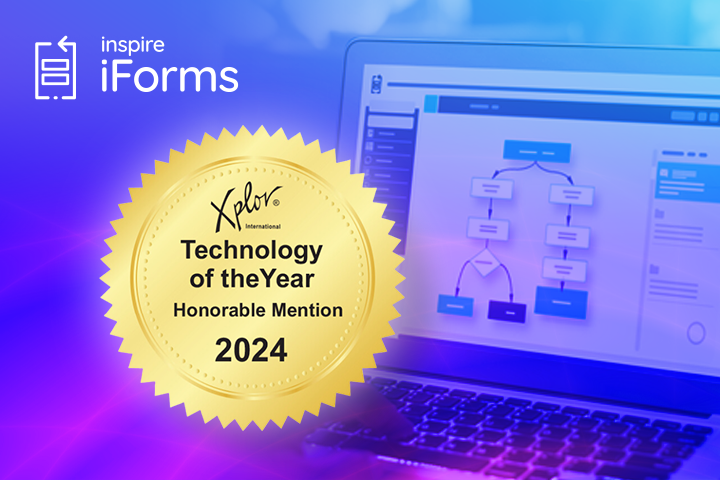Introduction
Did you know that integrating your ERP platform with automated payment solutions can minimize your costs on a per-transaction basis by up to 40%? It’s true. In fact, most automated AP platforms are designed to minimize manual tasks like data entry and purchase order processing by upwards of 80%, freeing your AP team to focus on more value-based tasks.
However, integrating your ERP system for accounts payable can be an in-depth process, so we’ve provided some important insight into how to do so here.
What is AP and ERP?
Before diving into the details, it’s important to be clear about the differences between accounts payable (AP) processes and enterprise resource planning (ERP) systems.
Your AP department is essentially responsible for monitoring the cash flow of your business and processing things like invoices, payments, purchase orders, and more. ERP solutions are different in that they’re more customer-based and focus on capturing some of the same data as the AP department, but also manage your enterprise’s policies and maintain relationships with customers and vendors.
Automating the AP process
- Invoice capture: One of the leading advantages of automating the accounts payable process is that AP automation software is equipped with optical character recognition (OCR) technology that can capture and analyze all of the data on a page, digitizing it into easily searchable text. This can then enable AP staff to pull up whatever they need at the simple touch of a button.
- Automated invoice approvals: In addition to digitizing your invoices and storing all the data captured under one umbrella, AP automation solutions also enable you to skip the manual invoice approval process and automatically approve invoices and send vendor payments, saving your team time and money.
- Payment processing: Automating your accounts payable process can make it easier to process both vendor payments in addition to those from customers. Having such software in place also makes certain that you don’t miss payments and avoid late fees, as well as follow up with customers to ensure they pay on time.
Streamlining business processes with ERP software
Much like automated AP software, ERP software provides several solutions to help your enterprise streamline processes, such as:
- Production planning and scheduling: ERP software can not only provide oversight into production planning but also go as far as to schedule when tasks are to be done, provide capacity planning solutions, and even help control the processes on your shop room floor if you run a manufacturing plant.
- Source of truth for data management: When it comes to data management solutions, one term often used is “single source of truth.” This simply refers to aggregating all your important data in one place, which accounts payable ERP solutions certainly allow you to do.
- Supply chain management optimization: By making processes easier to manage and more efficient and scalable, ERP systems help optimize the supply chain management process. They do so by enabling organizations to integrate data across all levels of the supply chain and improve visibility.
Advantages of combining AP tools and ERP software

- Improved accuracy of financial data: Integrating your ERP and AP systems will improve the accuracy of your financial data. Both are designed to digitize things like invoices and payments and ensure there are no double entries or errors, making certain you avoid double payments and late payments, and provide an audit trail.
- Reduced manual data entry issues: Not only is manual data entry extremely time-consuming, but it also opens the door for a variety of errors to seep into the accounting and bookkeeping process. By installing automated AP solutions and aligning them with your ERP platform, you can drastically reduce human error and free up your staff to focus on more pressing tasks.
- Faster processing time and increased productivity: Since staff will no longer need to key in information about invoices and other data into an ERP or hunt for information, processing times and productivity is easily increased. Additionally, invoice metadata can be synchronized between the AP and ERP software, further improving productivity.
- Improved visibility: Since data is delivered downstream through your organization much quicker with fewer errors, AP/ERP integrations enhance visibility across business operations and production lines. Metadata is synchronized, and the software is equipped with bidirectional data transport solutions that greatly improve oversight.
The challenges of integrating AP tools with ERP software: selecting the right solutions for your business
While there are benefits to integrating your AP system into your ERP, there are some challenges to be aware of. ERP Integration projects, in general, tend to be complex and costly, requiring a specific level of expertise to ensure a successful integration. Traditional AP systems were not built for integration, making these projects riskier and more expensive propositions. And most organizations aren’t built around one ERP. Due to different divisions, product lines, acquisitions, and mergers, they may have a multi-ERP setup.
A purpose-built AP system, like Quadient Accounts Payable, is designed for integration into multiple popular ERPs, saving time and reducing complexity. Quadient teams also have the expertise to help you integrate your ERP and AP quickly to ensure success.
AP core functionality vs. Quadient accounts payable enhancements
Quadient AP can extend the capabilities of your existing accounting software through integrations. Here's how some of the popular software packages extend your productivity:
| Xero | Quickbooks | NetSuite | Sage 200 | Quadient AP Enhancements | |
|---|---|---|---|---|---|
| AP automated process | Some | Some | Some | Some | Integrating Quadient AP with Xero brings full automation in only 15 minutes. |
| Business location level tracking | Invoice level | Invoice level | Invoice level | Invoice level | Users can additionally select a tracking category at line level when processing invoices. |
| Approval workflows | No | No | Yes | No | Users can create a range of simple/complex approval channels to meet their business requirements. |
| Invoice processing | Manual | Manual | Manual | Manual | SMARTcapture technology significantly reduces manual data entry. Over a 3-month period with Quadient AP integration, the ‘time to code’ statistic reduces from 3 minutes to under 1 minute per invoice due to inbuilt machine learning. |
| Invoice validation | Limited | Limited | Limited | Limited | Excellent validation between Quadient AP and Accounting Software ensures invoices posted are accurate. |
| Invoice approval process tracking | No | No | No | No | An analytics module where AP managers can track the progress of invoice processing and approving, user performance and much more. |
Conclusion
Integrating your ERP and AP automation software is a smart decision allowing you to further optimize your accounts payable processes and reduce additional overhead in other departments that work with accounts payable. Integrating these key systems provides improved accuracy of financial data, a reduction in errors due to manual work, speeds processing time, and improves overall visibility.







